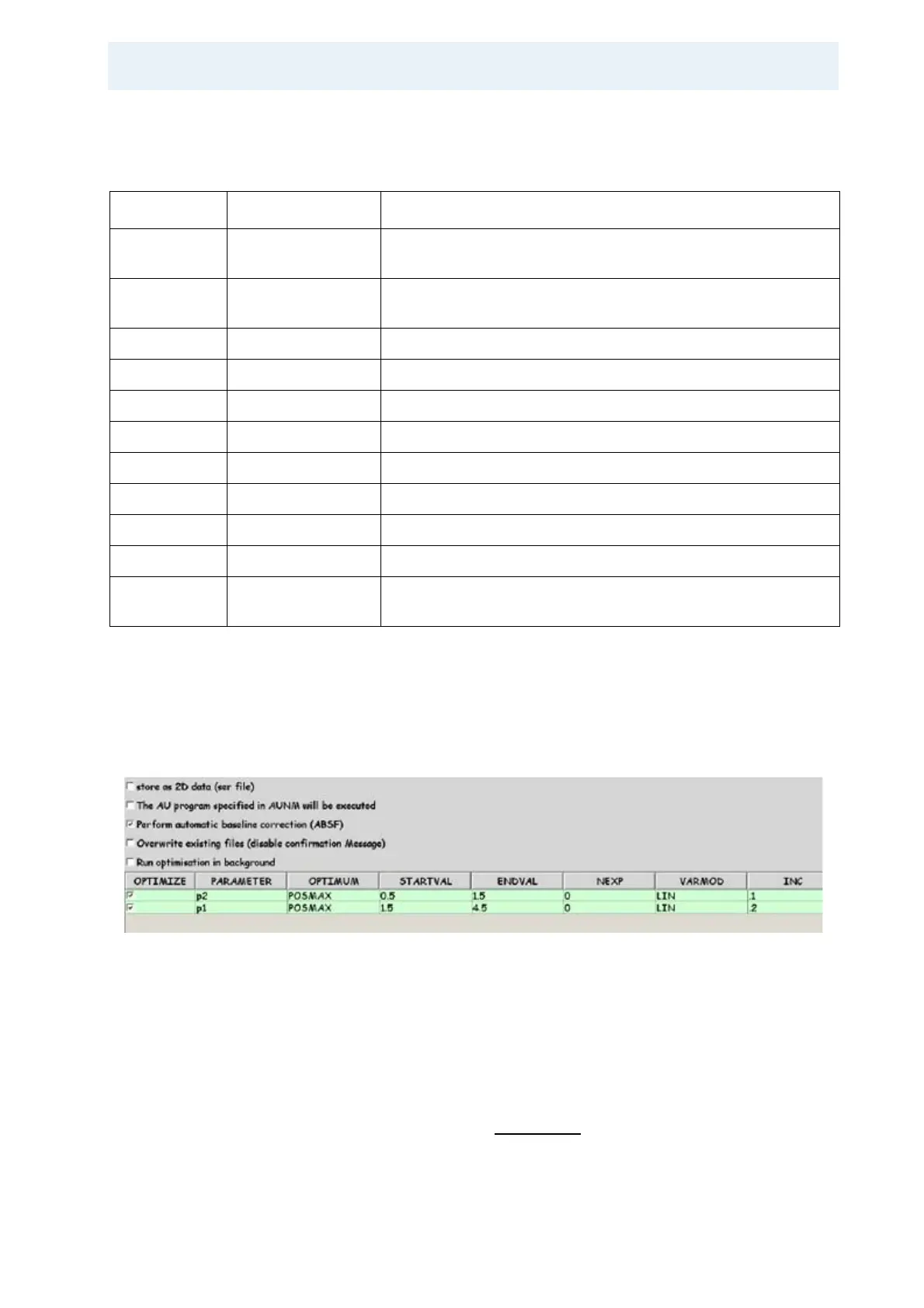Basic MQ-MAS
User Manual Version 002 BRUKER BIOSPIN 219 (327)
Hence, it is always better to optimize the pulse lengths p1 and p2. In this case p2
should be optimized before p1 because the signal intensity is much more sensi
-
tive to this pulse length. A suitable set-up for the parameter optimization proce-
dure popt is shown in following figure.
Figure 17.5. Example for popt Set-up for Optimization of p1 and p2.
In the first step p2 is optimized to which the experiment is the more sensitive. In
the second step p1 is optimized using the optimum value found for p2 in the first
step.
For more details about using the popt procedure to optimize a series of parame-
ters please refer to the manual. Figure 17.6. shows the signal amplitudes as func-
tions of pulse lengths p2 and p1.
Table 17.2. Initial Parameters for Setup
Parameter Value Comments
Pulprog mp3qzqf.av or
mp3qzfil.av
Pulse program.
NS 12*n (zqf)
96*n (zfil)
Full phase cycle is important.
D0 1u Or longer, t
1
-period.
D1 5 * T
1
Recycle delay, use dummy scans if shorter.
D4 20 µs Z-filter delay.
P1 3.6 µs Excitation pulse at pl11.
P2 1.2 µs Conversion pulse at pl11.
P3 20 µs 90° selective pulse at pl21 taken from previous pulse calibration.
PL1 =120 dB Not used.
PL11 start with ≈ 300 W Power level for excitation and conversion pulses.
PL21 Power level for selective pulse, approx. pl11+30 dB taken from
previous pulse calibration.
